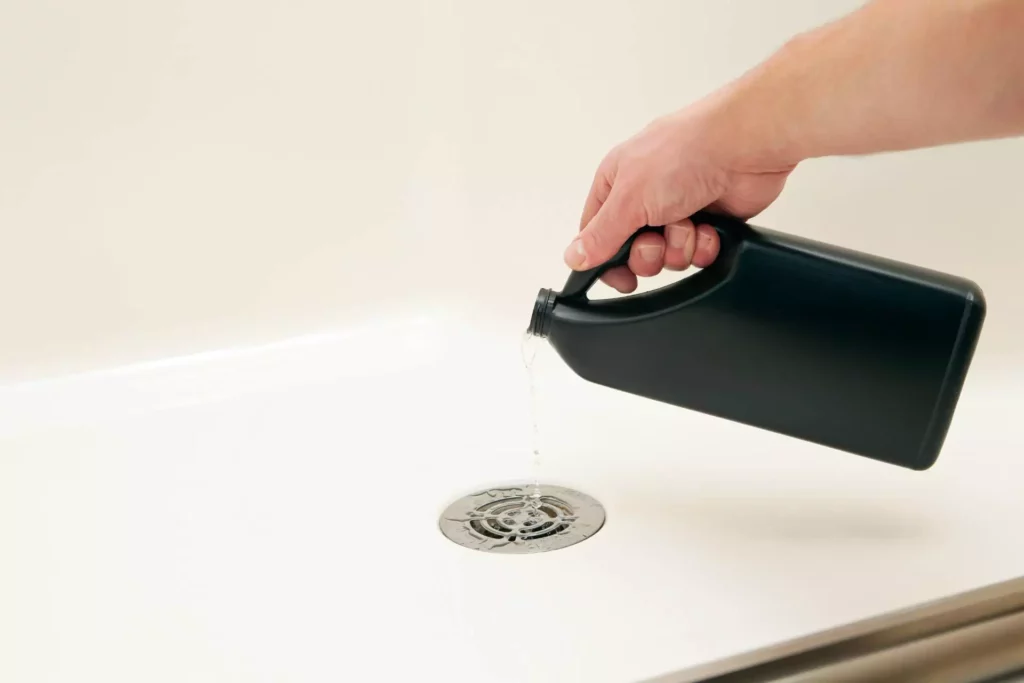Have you ever eagerly anticipated a soothing soak in your bathtub, only to be greeted by a frustrating pool of standing water? It’s a common scenario we’ve all faced at some point. But fear not—there are simple yet effective DIY methods to tackle that stubborn bathtub drain clog. Let’s explore some practical steps to reclaim your bathing sanctuary and banish those drainage woes for good.
Common Reasons for Bathtub Clogs
Imagine settling into a relaxing bath after a long day, only to find yourself ankle-deep in water that refuses to drain. Frustrating, right? Well, your bathtub drain can attract quite a few troublemakers. Here are the usual suspects:
Hair Build-up: Strands of hair seem to have a talent for finding their way into every corner, including your drain. They weave themselves into a tangled mess, forming stubborn blockages that can wreak havoc on your drainage system.
Soap Scum and Grime: As you enjoy your bubbly bath, the innocent-looking soap scum and grime are busy plotting their takeover of your pipes. They cling to the walls of your plumbing, constricting water flow and turning your tranquil bath into a battle against the gunk.
Unexpected Intruders: Your bathtub drain attracts more than just hair and soap scum. Misplaced jewelry, rogue bottle caps, and even tiny toys can enter your plumbing, causing chaos and mayhem.
So, the next time you’re faced with a clogged bathtub drain, remember these common culprits. With a little know-how and the right tools, you’ll be able to tackle those pesky blockages and get back to enjoying your bath in no time.
DIY Methods to Unclog a Bathtub Drain

Knowing effective do-it-yourself (DIY) methods can save you time and money when facing a clogged bathtub drain. Here are some simple yet effective techniques to unclog your bathtub drain and restore proper drainage:
DIY Methods to Unclog a Bathtub Drain:
Boiling water method:
Heat a pot of water to near boiling.
Pour down the drain in stages.
Avoid scalding yourself.
Vinegar and baking soda method:
Pour a cup of baking soda down the drain.
Follow with a cup of vinegar.
Allow for a chemical reaction to occur.
Let the mixture sit for about 10 minutes.
Flush the drain with hot water to wash away debris.
Plunger method:
Ensure enough water in the bathtub to cover the plunger’s rubber head.
Place the plunger over the drain.
Firmly push and pull to create suction.
Clean the bathtub thoroughly afterward.
Wet/dry vacuum method:
Set the vacuum to wet mode.
Create a tight seal around the drain opening with the nozzle.
Switch on the vacuum to utilize its powerful suction.
Pull out debris and clear clogs effectively.

When traditional DIY methods fail to resolve bathtub drain clogs, specialized tools and products can provide effective solutions. Here are some options to consider when facing stubborn blockages:
Tools and Products for Unclogging:
Drain snake:
Reach deep into pipes to dislodge stubborn blockages.
Flexible metal cables navigate bends and twists in plumbing.
Chemical drain cleaner:
Fast-acting, convenient option.
Be cautious of long-term effects like pipe corrosion and harm to aquatic ecosystems.
Wire coat hanger:
Clear out debris, but it can potentially damage drain pipes.
Enzyme-based drain cleaners:
A greener approach to unclogging drains.
Break down organic matter without harming pipes or the environment.
Drain bladder:
Uses water pressure to dislodge blockages without chemicals or physical force.
This layout introduces the tools and products for unclogging bathtub drains, presented in a bullet point list for clarity and easy reference.
Preventive Measures to Avoid Future Clogs
Preventive measures are essential to prevent future bathtub drain clogs and maintain smooth drainage. Here are some proactive steps you can take to avoid repeated clogs and ensure the optimal function of your bathtub drain:
Preventive Measures to Avoid Future Clogs:
Regular cleaning routine:
Weekly removal of hair and debris from the drain cover.
Monthly deep cleaning to prevent buildup.
Installation of drain stopper:
Effectively catches hair and other particles before they enter the drain.
Use of natural enzyme cleaners:
Harness the power of enzymes to break down organic matter.
Better for the environment and pipes.
Monthly maintenance with baking soda and vinegar:
Pour a cup of baking soda down the drain.
Follow with a cup of vinegar.
Let the mixture sit for around 30 minutes.
Flush with near-boiling hot water to prevent buildup and keep drains flowing smoothly.
When to Call a Professional
If DIY efforts prove futile, it is crucial to recognize signs necessitating professional plumbing assistance. Seek help if drains remain slow despite attempted remedies, foul odors persist, or multiple fixtures are affected simultaneously.
Costs for professional services vary depending on the severity of the issue. A professional plumber will guide you through the process and suggest further maintenance plans to maintain your tub drain.
Additionally, be vigilant for signs of more severe plumbing issues, such as gurgling sounds, water discoloration, or sudden spikes in water bills, which may indicate underlying structural or sewer line problems.
Conclusion

Unclogging a bathtub drain is a common task that DIY methods can effectively tackle. With just the most basic household tools and a little elbow grease, you can clear a clogged drain and return to comfort.
However, professional service is available if you have a serious issue or are unconfident. And when it comes to plumbing expertise, Phyxter Home Services stands out.
With a wealth of experience and knowledge, they provide high-quality information and reliable solutions for all your plumbing needs. For expert help, check if Phyxter Home Services operates in your area here. Explore our plumbing articles for more insightful articles and professional assistance.







